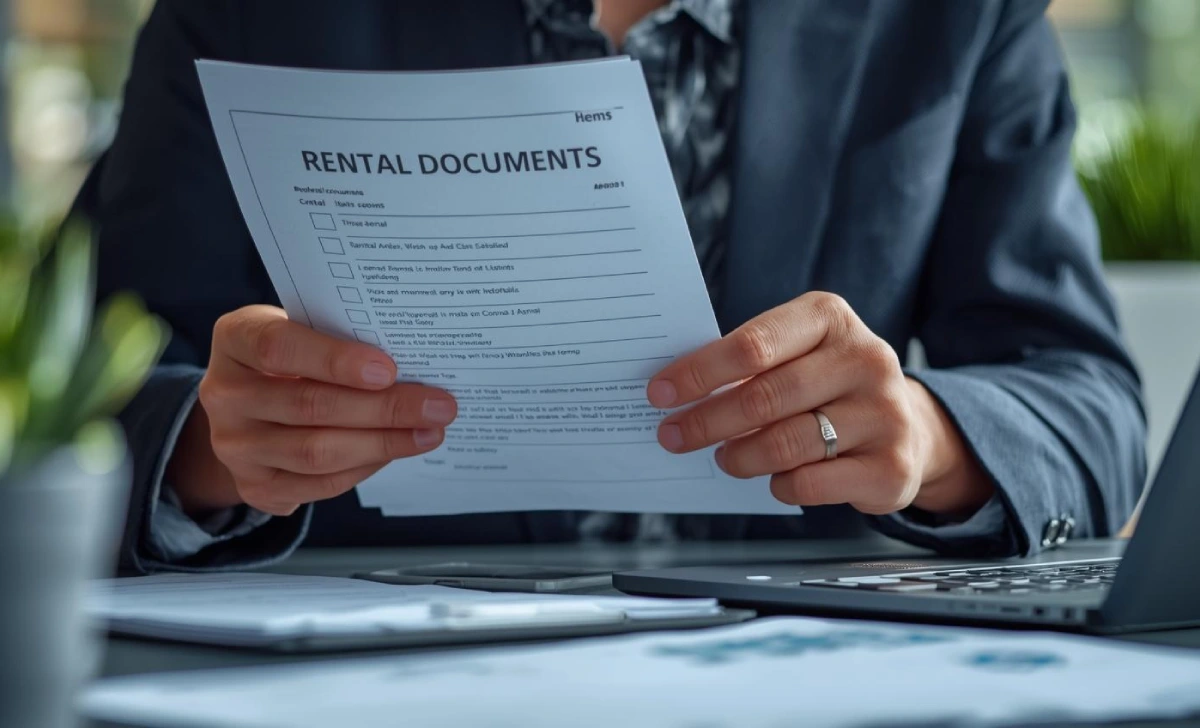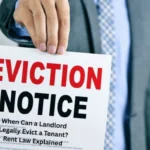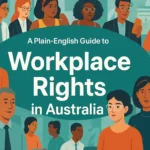Australia’s tight rental market has created perfect conditions for scammers to exploit desperate renters. With vacancy rates at historic lows and competition fierce, fraudsters are posting convincing fake listings to steal bonds and personal information. Here’s your complete guide to identifying rental scams Australia tactics, verifying legitimate listings, and protecting yourself from property fraud.
- How rental scams Australia work — common tactics and why they succeed
- Real scam examples & red flags to spot immediately
- Checklist to verify a rental listing (ID checks, TICA/NTD, property checks)
- 1. Cross-Platform Comparison:
- 2. Reverse Image Analysis:
- 3. Agent and Landlord Verification:
- 4. Live Inspection Requirement:
- 5. Payment Method Standards:
- 6. Tenant Database Verification:
- 7. Property Ownership Confirmation:
- Quick ID Verification Script:
- How to report a rental scam in Australia — step-by-step
- If you’ve already paid — immediate steps to recover funds & limit damage
- Urgent Financial Protection:
- Identity Security Measures:
- TICA/NTD Monitoring:
- Legal Support Options:
- Recovery Expectations:
- Prevention resources, reporting templates and next steps
- FAQs
- Conclusion:
Scammers specifically target Australian renters through popular platforms like Gumtree, Facebook Marketplace, and even legitimate real estate sites. Understanding their methods and having a verification checklist can save you thousands of dollars and prevent identity theft.
How rental scams Australia work — common tactics and why they succeed
Rental scammers use sophisticated tactics designed to exploit Australia’s rental crisis. They copy photos and descriptions from legitimate listings, then repost them at below-market prices to attract desperate renters. The most common approaches include:
Bait-and-switch operations : Where scammers advertise premium properties at unrealistic prices, then claim the advertised property is “just taken” but offer an inferior alternative after collecting application fees.
Impostor landlords: Create fake identities using stolen photos and credentials, often claiming to be overseas or unable to meet in person due to work commitments.
Upfront payment scams: Pressure victims to transfer bonds, rent in advance, or “holding fees” through untraceable methods like Western Union, cryptocurrency, or cash deposits before any viewing or verification.
Fake documentation: Includes forged lease agreements, fabricated property ownership documents, and counterfeit real estate agency credentials that appear legitimate at first glance.
These scams succeed because Australia’s rental shortage creates urgency and desperation. Many renters skip verification steps when facing competition from dozens of other applicants.
Real scam examples & red flags to spot immediately
Case Study 1: The Duplicate Listing Scam: Sarah found a beautiful two-bedroom apartment in Melbourne’s CBD listed for $350/week – half the market rate. The “landlord” claimed to be overseas and needed an immediate bond transfer. She later discovered the same photos on Domain for $650/week with a legitimate agent.
Case Study 2: The Fake Agent Con: James responded to a Gumtree listing where someone posed as a Ray White agent. The scammer used a fake ABN and requested $2,400 upfront for the bond and the first month’s rent via cryptocurrency. The real Ray White office had never heard of the property.
Case Study 3: The Pressure Payment Trap: Emma was told she had 24 hours to secure a rental by transferring $1,800 or lose it to other applicants. The “landlord” refused video calls and wouldn’t provide proper identification, claiming privacy concerns.
Red Flag Recognition Table:
| Warning Sign | What to Do Instead |
|---|---|
| Rent 20%+ below market rate | Research comparable properties first |
| Pressure to pay within hours | Take time to verify – legitimate landlords wait |
| Cash/crypto/Western Union only | Use traceable bank transfers to registered accounts |
| Refuses phone/video calls | Insist on live interaction before any payment |
| Copied photos across platforms | Reverse image search all listing photos |
| No ABN or vague agent details | Verify agency registration independently |
Checklist to verify a rental listing (ID checks, TICA/NTD, property checks)
Before transferring any money, follow this comprehensive verification process to confirm listing authenticity:
1. Cross-Platform Comparison:
Search identical photos across Domain, Realestate.com.au, Gumtree, and Facebook Marketplace. Legitimate listings typically appear on multiple platforms with consistent details and pricing.
2. Reverse Image Analysis:
Use Google’s reverse image search to check if photos appear elsewhere online. Scammers often steal images from overseas property sites or previous legitimate listings.
3. Agent and Landlord Verification:
Request full name, real estate agency license number, and ABN. Contact the agency directly using phone numbers from their official website – never use contact details provided in the suspicious listing.
4. Live Inspection Requirement:
Insist on in-person or live video inspection. Legitimate landlords and agents will accommodate this request. Be suspicious of anyone who refuses or offers only pre-recorded videos.
5. Payment Method Standards:
Only pay through traceable methods to registered business accounts. Legitimate agents use BPAY, direct bank transfer to company accounts, or established rent payment platforms. Never use cash, Western Union, cryptocurrency, or gift cards.
6. Tenant Database Verification:
Ask whether the property appears on TICA (Tenancy Information for Credit Assessment) or the National Tenancy Database. Request clarification on how these systems will be used and whether any previous tenancy issues exist for the property.
TICA and NTD are legitimate databases used by landlords to check tenant history, but scammers sometimes falsely reference them to appear credible.
7. Property Ownership Confirmation:
Use your state’s land titles office to verify actual property ownership. Most states provide online property search services for a small fee. 
Quick ID Verification Script:
Template message to send potential landlords/agents: “Hi, I’m interested in your property listing. Before proceeding, could you please provide: your full name, real estate license/ABN number, agency contact details, and availability for an in-person inspection? I’m happy to meet at your office or the property. I don’t make any payments until after verification and inspection. Thanks!”
How to report a rental scam in Australia — step-by-step
If you suspect rental fraud, take immediate action through multiple reporting channels:
Financial Recovery Actions:
Contact your bank first – request a transaction reversal or chargeback if the payment was made via card or bank transfer. Act within 24-48 hours for best results.
Official Reporting Channels:
- Scamwatch (ACCC) – report online at scamwatch.gov.au with all correspondence, screenshots, and transaction details
- Local police – file a report if money was lost or identity documents shared
- State tenancy authorities – Consumer Affairs or Fair Trading in your state
- Platform reporting – notify Facebook, Gumtree, and Domain where the scam appeared
Evidence Collection Before Reporting:
Gather screenshots of the original listing, all text/email correspondence, bank transaction records, any photos or videos shared, advertiser’s claimed contact details and ABN, and URLs where the scam appeared.
Reporting Priority Order:
- Bank (immediate chargeback attempt)
- Scamwatch (official record)
- Police (if substantial loss)
- Platform takedown request

If you’ve already paid — immediate steps to recover funds & limit damage
Discovering you’ve been scammed requires immediate damage control across multiple fronts:
Urgent Financial Protection:
Contact your bank within 24 hours to request a transaction recall or dispute the charge. Success rates are highest for card payments and decrease significantly for direct transfers, cash, or cryptocurrency.
Identity Security Measures:
If you shared personal documents, immediately contact credit reporting agencies (Equifax, Experian, and Illion) to place fraud alerts on your file. Change passwords for online banking, email, and social media accounts.
TICA/NTD Monitoring:
If you provided tenancy history or gave permission for database checks, contact TICA and the National Tenancy Database to ensure your information isn’t being misused for fraudulent applications.
Legal Support Options:
Access free initial advice through Community Legal Centres, Legal Aid NSW/VIC/QLD, or your state’s tenancy advocacy service. Many offer specialised assistance for scam victims.
Australian banks report varying chargeback success rates: approximately 70-80% for credit card payments, 40-50% for BPAY transfers, and less than 20% for direct cash transfers or cryptocurrency payments.
Recovery Expectations:
Be realistic about fund recovery prospects. Prevention through verification remains far more effective than post-scam recovery attempts.
Prevention resources, reporting templates and next steps
Protecting yourself requires ongoing vigilance and the right verification tools.
Free Verification Resources:
- Scamwatch.gov.au: Current scam alerts and reporting tools
- ACCC consumer rights: Understanding your protections
- State Fair Trading offices: Local tenancy advice and complaint services
- TICA/NTD information: Understanding legitimate database usage
Downloadable Prevention Toolkit:
Access our comprehensive verification package, including a printable property verification checklist, sample ID verification script for contacting agents, template Scamwatch report with required information fields, ABN verification process guide, and emergency contact list for banks and reporting agencies.
Community Support:
Share this information with friends and family members who are house hunting. Scammers often target international students, young professionals, and anyone new to the Australian rental market.
FAQs
Is it illegal to post fake rental ads in Australia?
Yes, fake rental advertisements constitute fraud under Australian Consumer Law, with penalties including fines and imprisonment.
Can I get my money back if I paid upfront to a scammer?
Recovery depends on the payment method. Contact your bank immediately – card payments have better chargeback protection than direct transfers or cash.
Should I check TICA before applying for rentals?
TICA checks are legitimate when used by verified agents/landlords, but scammers sometimes falsely reference these databases. Always verify the agent’s credentials first.
How quickly should I report suspected rental fraud?
Report immediately – within 24 hours for financial institutions, and as soon as possible to Scamwatch and the police for investigation purposes.
Conclusion:
Rental scams Australia operators are becoming increasingly sophisticated, but following systematic verification steps dramatically reduces your risk. Always verify agent credentials, insist on live inspections, check TICA/NTD claims, and use only traceable payment methods to registered business accounts.
If you suspect fraud, act immediately – contact your bank, report to Scamwatch, and gather evidence for potential recovery actions. Download our verification toolkit to stay protected, and remember that legitimate landlords and agents welcome thorough verification as it demonstrates you’re a serious, responsible tenant.
Stay vigilant, verify everything, and never let rental market pressure override your safety instincts.






